Michael Dunigan, 6'10, Center, BC Kalev (Estonia), 1989
22.4 Minutes, 11.5 Points, 7.8 Rebounds, 1.5 Blocks, 1.8 Turnovers, 2.9 Fouls, 55% FG, 71% FT
Jonathan Givony
A top-30 recruit coming out of high school, Michael Dunigan took the unconventional step of leaving college for Europe following a highly disappointing sophomore season at Oregon. He was overweight at the time, and facing allegations for taking improper benefits, accusations which were later dismissed.
Dunigan signed a three year contract with Hapoel Jerusalem, but was later loaned to BC Kalev/Cramo in Estonia to get more playing time. The team played 50 games in three competitions this seasonthe VTB United League, the Baltic League and the Estonian league, and Dunigan acted as their go-to guy, scoring over a point every two minutes, while blocking shots and rebounding the ball exceptionally well.
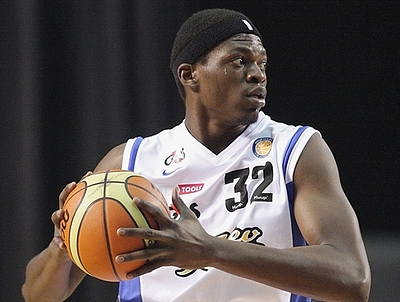
Though Kalev does not have a true top-option, Dunigan is the team's most legitimate interior threat, best athlete, and most prolific offensive player. Though he scores a significant portion of his points on hustle plays and catch-and-finish opportunities around the rim, Dunigan also sees a consistent stream of touches with his back to the basket, something he may struggle to translate against better competition.
Dunigan has been most consistent working off the ball. Showing good timing on his cuts and a knack for being in the right place at the right time when driving teammates need an outlet, he has finished at a very good rate around the rim (converting 69% of his attempts) with his long wingspan and much improved conditioning and leaping ability. He also draws a foul on over 25% of his used possessions, which is part of the reason he was so efficient in his minutes on the floorranking 2nd amongst all big men in this draft in points per possession.
His tremendous 7-3 ¼ wingspan allows him to crash the glass at a good rate, but the improvement in his physique trimming down to 238 pounds and just 8% body fat-- has played a role in that as well. Having lost some 30 pounds since turning pro, Dunigan appears more active and explosive than he was during his time at Oregon, as evidenced by how much more frequently he now plays above the rim, and how much better he's rebounding.
Dunigan wasn't asked to show much of an offensive game stepping away from the rimhe only shot a handful of jumpers on the season, although he did make a few of them and also hit 71% of his free throws. He isn't a great passer or the most skilled player around and doesn't possess an incredible feel for the game, but to his credit, he knows his limitations and is very effective in the role he's asked to play.
Defensively, Dunigan plays with very good intensity and shows toughness as a rebounder, but lacks great fundamentals and struggles a bit when stepping out on the perimeter and hedging screens. He gives up a little too much space at times in the paint, relying a bit too heavily on his length and shot-blocking instincts to bail him out, but wants to compete and was very effective this season against the competition he faced. Standing 6-10 in shoes, with a 7-3 wingspan, he should have no problem guarding most NBA centers as he continues to add weight to his frame.
Automatically eligible for the 2011 NBA Draft, Dunigan is a bit of an unknown in this draft as he was very much off the radar of most international scouts playing in Estonia, but is surely worthy of taking a flyer on in the second round thanks to his physical tools, pedigree and versatility.
A top-30 recruit coming out of high school, Michael Dunigan took the unconventional step of leaving college for Europe following a highly disappointing sophomore season at Oregon. He was overweight at the time, and facing allegations for taking improper benefits, accusations which were later dismissed.
Dunigan signed a three year contract with Hapoel Jerusalem, but was later loaned to BC Kalev/Cramo in Estonia to get more playing time. The team played 50 games in three competitions this seasonthe VTB United League, the Baltic League and the Estonian league, and Dunigan acted as their go-to guy, scoring over a point every two minutes, while blocking shots and rebounding the ball exceptionally well.

Though Kalev does not have a true top-option, Dunigan is the team's most legitimate interior threat, best athlete, and most prolific offensive player. Though he scores a significant portion of his points on hustle plays and catch-and-finish opportunities around the rim, Dunigan also sees a consistent stream of touches with his back to the basket, something he may struggle to translate against better competition.
Dunigan has been most consistent working off the ball. Showing good timing on his cuts and a knack for being in the right place at the right time when driving teammates need an outlet, he has finished at a very good rate around the rim (converting 69% of his attempts) with his long wingspan and much improved conditioning and leaping ability. He also draws a foul on over 25% of his used possessions, which is part of the reason he was so efficient in his minutes on the floorranking 2nd amongst all big men in this draft in points per possession.
His tremendous 7-3 ¼ wingspan allows him to crash the glass at a good rate, but the improvement in his physique trimming down to 238 pounds and just 8% body fat-- has played a role in that as well. Having lost some 30 pounds since turning pro, Dunigan appears more active and explosive than he was during his time at Oregon, as evidenced by how much more frequently he now plays above the rim, and how much better he's rebounding.
Dunigan wasn't asked to show much of an offensive game stepping away from the rimhe only shot a handful of jumpers on the season, although he did make a few of them and also hit 71% of his free throws. He isn't a great passer or the most skilled player around and doesn't possess an incredible feel for the game, but to his credit, he knows his limitations and is very effective in the role he's asked to play.
Defensively, Dunigan plays with very good intensity and shows toughness as a rebounder, but lacks great fundamentals and struggles a bit when stepping out on the perimeter and hedging screens. He gives up a little too much space at times in the paint, relying a bit too heavily on his length and shot-blocking instincts to bail him out, but wants to compete and was very effective this season against the competition he faced. Standing 6-10 in shoes, with a 7-3 wingspan, he should have no problem guarding most NBA centers as he continues to add weight to his frame.
Automatically eligible for the 2011 NBA Draft, Dunigan is a bit of an unknown in this draft as he was very much off the radar of most international scouts playing in Estonia, but is surely worthy of taking a flyer on in the second round thanks to his physical tools, pedigree and versatility.
Jeremy Tyler, 6'10.5, Center, Tokyo Apache (Japan), 1991
15.4 Minutes, 9.9 Points, 6.4 Rebounds, 2.7 Fouls, 2.3 Turnovers, 51.7% FG, 45.4% FT
Matt Williams
Automatically eligible for the 2011 NBA draft despite only turning 20 a couple of weeks ago, the Jeremy Tyler saga will finally reach an abrupt end as he waits to hear his name called on Thursday night. For two years, Tyler has been a lightning-rod for controversy, bypassing his senior year of high school to play for Maccabi Haifa in the Israeli League, struggling with the pressures of being an 18 year-old pro, subsequently signing to play in the Japanese BJ League, and seeing the lesser than stellar season he was having cut short by the tragic earthquake.
Seeing limited minutes in both of his professional seasons and taking a huge step down in level of competition, scouts have as many questions about Tyler's fundamentals and his feel for the game as they do about his maturity and ability to handle the pressures of being a young player developing on a NBA bench. Recent interviews and workouts have answered some of those questions, and Tyler's camp has done a terrific job addressing his off-court issues over the past few months, but a degree of uncertainty about the San Diego native remains.
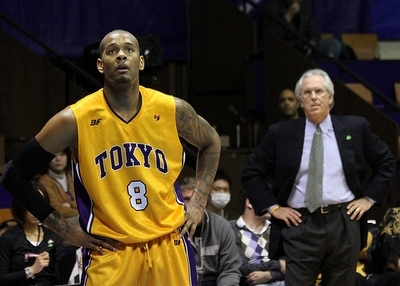
The one question scouts are not asking is whether or not Tyler has the physical tools to compete at the NBA level. Standing nearly 6'11 with a 7'5 wingspan, tipping the scales with a 260+ pound frame that still has plenty of room for improvement, and possessing very good athleticism for a player with those measurements, Tyler has all the makings of a NBA big man on first glance.
Unfortunately, those tools did not consistently manifest themselves in any significant way in the very weak Japanese BJ League (not the top league in that country), which is obviously concerning. Tyler struggled mightily for stretches, and just as he was seemingly turning the corner, he was flying back to the United States after the cancellation of the rest of his team's games.
One of the tallest and stronger players in the Japanese League, Tyler had some brief stretches of impressive play for the Apache. He was able to use his size to establish deep position in the post at times, and showed a budding turnaround jump shot and face-up game. His near 7'5 wingspan allowed him to get his shot of at will even if the moves he was making were quite erratic at times.
Unfortunately, for every shot Tyler made in the post he missed an equally makeable short-range attempt or turned directly into the teeth of the defense in the post and coughed the ball up.
Working extensively with former San Antonio Spurs head coach and notable big man developer, Bob Hill, Tyler's skill level has improved from his high school days, and his 52% shooting in Japan is far better than the 44% he mustered in Israel. Unfortunately, Tyler's feel for utilizing the skills he has developed remains limited. His recognition of where to go with the ball in one-on-one situations is questionable, and despite the size advantage he had in Japan, he did not make too many strong, decisive moves to the rim or elevate well to finish in a crowd. Only compounding the challenges he faced in his learning process this season, he turned the ball over at a frustratingly high rate with his back to the basket.
To Tyler's credit, he did face quite a few double teams for a player still very much learning the game, and used his leaping ability far more effectively on the offensive glass when he had a bit of time to gather himself. He also knocked down quite a few perimeter shots for a center. Tyler's shooting isn't close to being on par with someone like Nikola Vucevic, and he struggled from the foul line, but his midrange stroke is one of his more intriguing tools considering his ability to get it off in the post and when facing up.
Defensively, Tyler did show an improved motor, which is significant considering he was maligned for his efforts early in his career. His activity level stayed fairly solid when he was on the floor, but he's still foul prone and yet to learn how to maximize his physical tools. He lets himself get pushed around too easily at times, and though he doesn't give up too many truly easy baskets, he's going to benefit immensely from a NBA strength and conditioning program and a coach who continue to push his development.
Breaking down Tyler's success, or lack thereof, in the Japanese BJ League is only a small piece of the puzzle in analyzing his draft stock. NBA teams always place a premium on size, and Tyler has that. In this draft, they are looking for players with legitimate potential, and Tyler has that too. They also take a keen interest in every prospect's intangibles, and that is where Tyler's situation get murky. He's done a good job handling himself throughout the trials of the workout and interview process, but what, if any red flags teams uncover in their background checks and psychological analyses will be hugely important to where he gets selected.
Automatically eligible for the 2011 NBA draft despite only turning 20 a couple of weeks ago, the Jeremy Tyler saga will finally reach an abrupt end as he waits to hear his name called on Thursday night. For two years, Tyler has been a lightning-rod for controversy, bypassing his senior year of high school to play for Maccabi Haifa in the Israeli League, struggling with the pressures of being an 18 year-old pro, subsequently signing to play in the Japanese BJ League, and seeing the lesser than stellar season he was having cut short by the tragic earthquake.
Seeing limited minutes in both of his professional seasons and taking a huge step down in level of competition, scouts have as many questions about Tyler's fundamentals and his feel for the game as they do about his maturity and ability to handle the pressures of being a young player developing on a NBA bench. Recent interviews and workouts have answered some of those questions, and Tyler's camp has done a terrific job addressing his off-court issues over the past few months, but a degree of uncertainty about the San Diego native remains.

The one question scouts are not asking is whether or not Tyler has the physical tools to compete at the NBA level. Standing nearly 6'11 with a 7'5 wingspan, tipping the scales with a 260+ pound frame that still has plenty of room for improvement, and possessing very good athleticism for a player with those measurements, Tyler has all the makings of a NBA big man on first glance.
Unfortunately, those tools did not consistently manifest themselves in any significant way in the very weak Japanese BJ League (not the top league in that country), which is obviously concerning. Tyler struggled mightily for stretches, and just as he was seemingly turning the corner, he was flying back to the United States after the cancellation of the rest of his team's games.
One of the tallest and stronger players in the Japanese League, Tyler had some brief stretches of impressive play for the Apache. He was able to use his size to establish deep position in the post at times, and showed a budding turnaround jump shot and face-up game. His near 7'5 wingspan allowed him to get his shot of at will even if the moves he was making were quite erratic at times.
Unfortunately, for every shot Tyler made in the post he missed an equally makeable short-range attempt or turned directly into the teeth of the defense in the post and coughed the ball up.
Working extensively with former San Antonio Spurs head coach and notable big man developer, Bob Hill, Tyler's skill level has improved from his high school days, and his 52% shooting in Japan is far better than the 44% he mustered in Israel. Unfortunately, Tyler's feel for utilizing the skills he has developed remains limited. His recognition of where to go with the ball in one-on-one situations is questionable, and despite the size advantage he had in Japan, he did not make too many strong, decisive moves to the rim or elevate well to finish in a crowd. Only compounding the challenges he faced in his learning process this season, he turned the ball over at a frustratingly high rate with his back to the basket.
To Tyler's credit, he did face quite a few double teams for a player still very much learning the game, and used his leaping ability far more effectively on the offensive glass when he had a bit of time to gather himself. He also knocked down quite a few perimeter shots for a center. Tyler's shooting isn't close to being on par with someone like Nikola Vucevic, and he struggled from the foul line, but his midrange stroke is one of his more intriguing tools considering his ability to get it off in the post and when facing up.
Defensively, Tyler did show an improved motor, which is significant considering he was maligned for his efforts early in his career. His activity level stayed fairly solid when he was on the floor, but he's still foul prone and yet to learn how to maximize his physical tools. He lets himself get pushed around too easily at times, and though he doesn't give up too many truly easy baskets, he's going to benefit immensely from a NBA strength and conditioning program and a coach who continue to push his development.
Breaking down Tyler's success, or lack thereof, in the Japanese BJ League is only a small piece of the puzzle in analyzing his draft stock. NBA teams always place a premium on size, and Tyler has that. In this draft, they are looking for players with legitimate potential, and Tyler has that too. They also take a keen interest in every prospect's intangibles, and that is where Tyler's situation get murky. He's done a good job handling himself throughout the trials of the workout and interview process, but what, if any red flags teams uncover in their background checks and psychological analyses will be hugely important to where he gets selected.
Adam Hanga, 6'7, Shooting Guard/Small Forward, Albacomp (Hungary), 1989
33.3 Minutes, 17.6 Points, 4.4 Rebounds, 3.4 Assists, 1,8 Turnovers, 2.8 Steals, 57.2% FG, 37% 3P, 65.5% FT
Matt Williams
Adam Hanga is one of the lesser known international prospects in this draft. Playing his entire career in his native Hungary to this point, Hanga has garnered attention for his play with the Hungarian National Team and generated some buzz after showcasing his game in front of scouts at the EuroCamp a few weeks ago.
Standing a shade under 6'7 with a below average 6-7 ½ wingspan, Hanga has good height for a perimeter player at the NBA level, and matches it with impressive athleticism for a European prospect. He has very good straight-line speed, a quick first step, and adequate leaping ability. His sub-200 pound frame does not limit him in the Hungarian League, but will be an area of interest if and when he makes the transition to the NBA and begins matching up with stronger players defensively and take contact offensively.
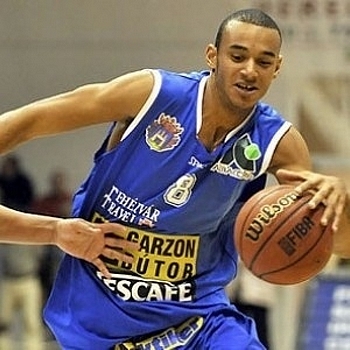
Hanga's physical tools made him a dominant figure in the Hungarian League, where he essentially gave Albacomp an additional import-level talent. Seldom facing an athlete up to his standards in domestic play, Hanga was at his best around the basket and out in transition since he could get to the rim essentially whenever he wanted to and turn on the jets and win a footrace in the open floor virtually at will. On top of that, he shows very nice touch in the paint, even knocking down an occasional high-arcing floater with the defense collapses around him.
Seldom needing to change directions with the ball when he drives into the paint in the Hungarian League, Hanga does not appear to be very shifty off the dribble. He does do a decent job changing gears as he breaks down his defender to slash to the rim, but likes to keep things fairly linear, something he may have to change when he faces off with more athletic defenders for the road. He'll also need to become more adept at drawing fouls and finishing through contact, as he struggles at times when challenged in the paint, and only averaged one free throw attempt for every 11 minutes he spent on the court.
Away from the basket, Hanga is capable of knocking down shots from beyond the arc, but lacks some consistency in his perimeter footwork and mechanics. His follow-through is consistent, but he will force some off-balance shots from time to time, varying his release and rhythm slightly when he has more or less time than expected out on the perimeter. His midrange game is still a work in progress at this point in his career, since up until this point, his level of competition hasn't required him to develop one.
When Hanga isn't looking to score, he does a nice job setting up his teammates in Hungarian League, but does not show a tremendous feel for the game against better competition. Though he's not a pure point guard by any stretch of the imagination, at 6'7, Hanga has some experience as a primary ball-handler. His ability to distort Hungarian defenses at will allows him to make easy passes to wide-open cutters and rack up assists, but when he can't simply turn the corner and draw an additional defender, he isn't a dynamic playmaker.
Defensively, Hanga has the quickness to be able to capably defend his position at the NBA-level, but hasn't faced off against too many NBA-caliber scorers in his career. His size and rangy stride makes him a factor in the passing lanes, and he shows very solid lateral quickness. If he continues improving his frame, he could have all the makings of a highly versatile defender down the road, although his lack of length does put him at a disadvantage.
At this point, the Hungarian swingman is not a surefire draft pick, but his situation is intriguing. He recently signed a multi-year deal with Assignia Manresa of the ACB, making a ready-made candidate for a team looking to draft-and-stash a prospect with their second round pick. On top of not having to bring him over immediately, any team picking him would get to monitor his ability to deal with the significant jump in competition he'll face next season, giving them a point of reference should they debate adding him to their roster.
A supremely high-usage player at the level he played it, Hanga likely would have been better served leaving his home nation a few years ago and gain experience as a roleplayer, as he's going to have to adjust to a different role while he's learning to play the game at a higher-level simultaneous, which will certainly be a challenge. Despite being 22 years old, Hanga is a largely untested talent, and even if he isn't selected, he's a player teams will be keeping an eye on him since his inexperience, coupled with his size and athleticism, give him a degree of upside they don't often see from automatically eligibly international players.
Adam Hanga is one of the lesser known international prospects in this draft. Playing his entire career in his native Hungary to this point, Hanga has garnered attention for his play with the Hungarian National Team and generated some buzz after showcasing his game in front of scouts at the EuroCamp a few weeks ago.
Standing a shade under 6'7 with a below average 6-7 ½ wingspan, Hanga has good height for a perimeter player at the NBA level, and matches it with impressive athleticism for a European prospect. He has very good straight-line speed, a quick first step, and adequate leaping ability. His sub-200 pound frame does not limit him in the Hungarian League, but will be an area of interest if and when he makes the transition to the NBA and begins matching up with stronger players defensively and take contact offensively.

Hanga's physical tools made him a dominant figure in the Hungarian League, where he essentially gave Albacomp an additional import-level talent. Seldom facing an athlete up to his standards in domestic play, Hanga was at his best around the basket and out in transition since he could get to the rim essentially whenever he wanted to and turn on the jets and win a footrace in the open floor virtually at will. On top of that, he shows very nice touch in the paint, even knocking down an occasional high-arcing floater with the defense collapses around him.
Seldom needing to change directions with the ball when he drives into the paint in the Hungarian League, Hanga does not appear to be very shifty off the dribble. He does do a decent job changing gears as he breaks down his defender to slash to the rim, but likes to keep things fairly linear, something he may have to change when he faces off with more athletic defenders for the road. He'll also need to become more adept at drawing fouls and finishing through contact, as he struggles at times when challenged in the paint, and only averaged one free throw attempt for every 11 minutes he spent on the court.
Away from the basket, Hanga is capable of knocking down shots from beyond the arc, but lacks some consistency in his perimeter footwork and mechanics. His follow-through is consistent, but he will force some off-balance shots from time to time, varying his release and rhythm slightly when he has more or less time than expected out on the perimeter. His midrange game is still a work in progress at this point in his career, since up until this point, his level of competition hasn't required him to develop one.
When Hanga isn't looking to score, he does a nice job setting up his teammates in Hungarian League, but does not show a tremendous feel for the game against better competition. Though he's not a pure point guard by any stretch of the imagination, at 6'7, Hanga has some experience as a primary ball-handler. His ability to distort Hungarian defenses at will allows him to make easy passes to wide-open cutters and rack up assists, but when he can't simply turn the corner and draw an additional defender, he isn't a dynamic playmaker.
Defensively, Hanga has the quickness to be able to capably defend his position at the NBA-level, but hasn't faced off against too many NBA-caliber scorers in his career. His size and rangy stride makes him a factor in the passing lanes, and he shows very solid lateral quickness. If he continues improving his frame, he could have all the makings of a highly versatile defender down the road, although his lack of length does put him at a disadvantage.
At this point, the Hungarian swingman is not a surefire draft pick, but his situation is intriguing. He recently signed a multi-year deal with Assignia Manresa of the ACB, making a ready-made candidate for a team looking to draft-and-stash a prospect with their second round pick. On top of not having to bring him over immediately, any team picking him would get to monitor his ability to deal with the significant jump in competition he'll face next season, giving them a point of reference should they debate adding him to their roster.
A supremely high-usage player at the level he played it, Hanga likely would have been better served leaving his home nation a few years ago and gain experience as a roleplayer, as he's going to have to adjust to a different role while he's learning to play the game at a higher-level simultaneous, which will certainly be a challenge. Despite being 22 years old, Hanga is a largely untested talent, and even if he isn't selected, he's a player teams will be keeping an eye on him since his inexperience, coupled with his size and athleticism, give him a degree of upside they don't often see from automatically eligibly international players.
Giorgi Shermadini, 7'1 Center, Union Olimpija (Slovenia), 1989
15.5 Minutes, 7.5 Points, 3.4 Rebounds, 1.1 Blocks, 1.4 Turnovers, 2.5 Fouls, 66.1% FG, 84.8% FT
Matt Williams
The last time we wrote about Giorgi Shermadini, he was an early entry candidate for 2008 NBA draft fresh off a solid showing at the 2008 EuroCamp. Having played in his native Georgia until that point, Shermadini withdrew his name from the draft and signed with Greek power Panathinaikos later that fall. Seeing limited action in two seasons in Athens, he was loaned to fellow Euroleague participant Union Olimpija Ljubljana for the 2010-11 season.
Seeing his first consistent playing time since leaving his home country, Shermadini has re-emerged as a substantial NBA prospect. Standing somewhere in the ball-park of 7'0 tall and possessing a somewhat problematic 250-pound that would benefit immensely from some added muscle, Shermadini is a fairly mobile big man for his size. He runs the floor somewhat awkwardly, but can get off his feet to challenge shots and finish above the rim.
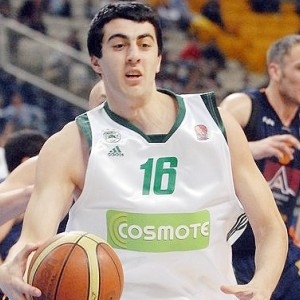
According to Synergy Sports Technology, a little more than 50% of Shermadini's touches from cuts, roll man situations, and put-backs. Showing a terrific effort level around the paint, Shermadini's size and deft touch allowed him to convert those opportunities at a tremendous 70% rate last season. Shermadini lacks upper body strength, brings the ball down too low at times after the catch, and does not always finish through contact effectively, but he does a tremendous job maintaining spacing, setting screens, filling lanes, staying with the play, and actively pursuing the ball off the rim.
In the post, Shermadini relies on his ability to carve out position to score. Though he is not a heavily utilized part of Olimpija's offensive attack, he sees the ball at a pretty consistent rate down low. Able to carve out space on the block against smaller players, Shermadini's size makes him a good target for lob passes, and he has a basic post-game. He struggles with turnovers against stronger, more physical players, but he doesn't hurt his team by forcing difficult shots down low.
Away from the basket, Shermadini has shown the ability to knock down perimeter shots in limited touches. Similar to his approach in the post, Shermadini is not overly assertive, taking most of his shots when he's wide open and showing range all the way out to a step inside the three-point arc. He knocks down his free throws at a good rate, and while he won't be relied on to stretch the floor should he play in the NBA, he could develop the consistency to not have to sit on the block if he's paired with a very capable post-up four.
Considering the small role he played for Olimpija and the similarly small role he'd likely play in the NBA long-term, Shermadini's biggest weakness is his turnover rate. Struggling to hang onto the ball in traffic, the Georgian center needs to get stronger and be more decisive in the paint.
Defensively, Shermadini really struggles against stronger back to the basket players, but not for lack of trying. He shows a good activity level and is a smart team defender. He's very foul prone at this point, as his main weakness is his inability to keep his man from getting a foot in the paint on the catch.
Similar to Hanga, Shermadini is an intriguing draft and stash prospect in the latter part of the 2nd round. He showed well in his first season competing at the highest levels of European basketball, and definitely still has some room to improve, especially if he's actually 21 like his date of birth indicates, and not 24 like most NBA teams suspect. Either way, he's clearly not a finished product. His energy level and size make him a legitimate prospect, albeit one with a low ceiling.
The last time we wrote about Giorgi Shermadini, he was an early entry candidate for 2008 NBA draft fresh off a solid showing at the 2008 EuroCamp. Having played in his native Georgia until that point, Shermadini withdrew his name from the draft and signed with Greek power Panathinaikos later that fall. Seeing limited action in two seasons in Athens, he was loaned to fellow Euroleague participant Union Olimpija Ljubljana for the 2010-11 season.
Seeing his first consistent playing time since leaving his home country, Shermadini has re-emerged as a substantial NBA prospect. Standing somewhere in the ball-park of 7'0 tall and possessing a somewhat problematic 250-pound that would benefit immensely from some added muscle, Shermadini is a fairly mobile big man for his size. He runs the floor somewhat awkwardly, but can get off his feet to challenge shots and finish above the rim.

According to Synergy Sports Technology, a little more than 50% of Shermadini's touches from cuts, roll man situations, and put-backs. Showing a terrific effort level around the paint, Shermadini's size and deft touch allowed him to convert those opportunities at a tremendous 70% rate last season. Shermadini lacks upper body strength, brings the ball down too low at times after the catch, and does not always finish through contact effectively, but he does a tremendous job maintaining spacing, setting screens, filling lanes, staying with the play, and actively pursuing the ball off the rim.
In the post, Shermadini relies on his ability to carve out position to score. Though he is not a heavily utilized part of Olimpija's offensive attack, he sees the ball at a pretty consistent rate down low. Able to carve out space on the block against smaller players, Shermadini's size makes him a good target for lob passes, and he has a basic post-game. He struggles with turnovers against stronger, more physical players, but he doesn't hurt his team by forcing difficult shots down low.
Away from the basket, Shermadini has shown the ability to knock down perimeter shots in limited touches. Similar to his approach in the post, Shermadini is not overly assertive, taking most of his shots when he's wide open and showing range all the way out to a step inside the three-point arc. He knocks down his free throws at a good rate, and while he won't be relied on to stretch the floor should he play in the NBA, he could develop the consistency to not have to sit on the block if he's paired with a very capable post-up four.
Considering the small role he played for Olimpija and the similarly small role he'd likely play in the NBA long-term, Shermadini's biggest weakness is his turnover rate. Struggling to hang onto the ball in traffic, the Georgian center needs to get stronger and be more decisive in the paint.
Defensively, Shermadini really struggles against stronger back to the basket players, but not for lack of trying. He shows a good activity level and is a smart team defender. He's very foul prone at this point, as his main weakness is his inability to keep his man from getting a foot in the paint on the catch.
Similar to Hanga, Shermadini is an intriguing draft and stash prospect in the latter part of the 2nd round. He showed well in his first season competing at the highest levels of European basketball, and definitely still has some room to improve, especially if he's actually 21 like his date of birth indicates, and not 24 like most NBA teams suspect. Either way, he's clearly not a finished product. His energy level and size make him a legitimate prospect, albeit one with a low ceiling.
















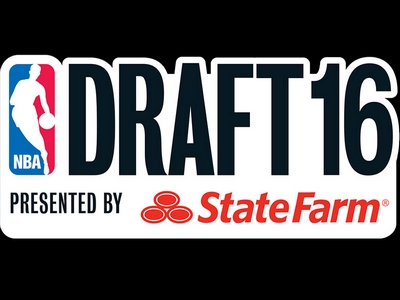














Comments